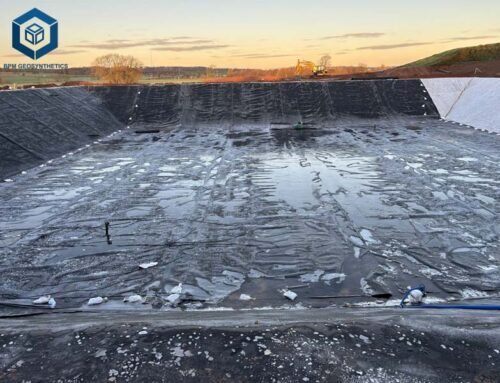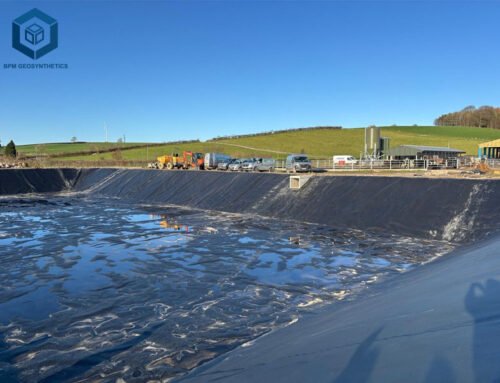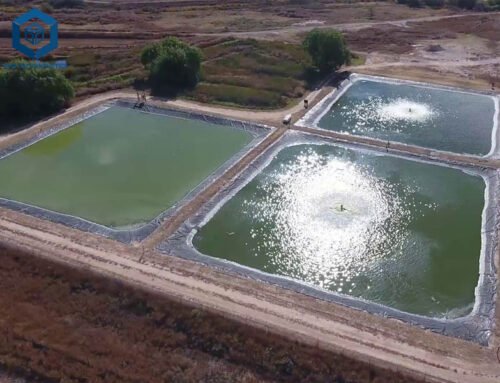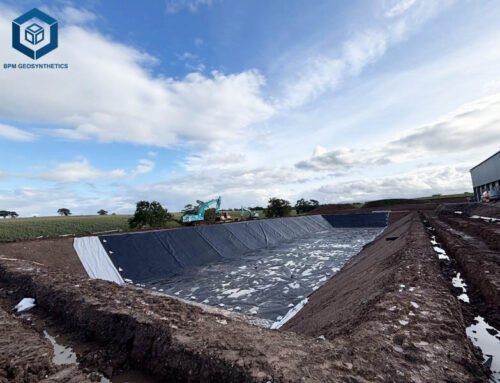Geomembranes are indispensable components in a multitude of civil engineering and environmental applications, serving as critical barriers to contain liquids and gases. From landfill liners and mining heap leach pads to reservoir linings and aquaculture ponds, their effective performance is paramount to environmental protection and project success. A question of utmost importance to project developers, engineers, and environmental specialists is: “What is the life expectancy of a geomembrane?” The answer, while complex, can be comprehensively addressed by understanding the intricate interplay of material science, environmental conditions, installation practices, and ongoing maintenance. This detailed guide aims to provide valuable insights into the factors influencing geomembrane longevity, leveraging industry standards, scientific research, and real-world data to offer a robust understanding.
1. Understanding Geomembranes: Beyond the Basic Barrier
At its core, a geomembrane is a very low permeability synthetic membrane liner or barrier used with any geotechnical engineering related material to control fluid migration. These synthetic liners are primarily made from polymeric materials, with High-Density Polyethylene (HDPE) and Linear Low-Density Polyethylene (LLDPE) being the most common due to their excellent chemical resistance, durability, and cost-effectiveness. However, other materials like Polyvinyl Chloride (PVC), Chlorosulfonated Polyethylene (CSPE), and Reinforced Polypropylene (RPP/RPE) are also utilized for specific applications where their unique properties offer advantages.
The life expectancy of a geomembrane is not a static number but rather a dynamic projection influenced by a combination of inherent material properties and external forces. While many manufacturers provide warranties ranging from 20 to 30 years, and some industry standards suggest a service life of 50 to 100 years under ideal conditions, actual performance can vary significantly. The key to maximizing geomembrane longevity lies in a meticulous approach to selection, installation, and post-installation management.
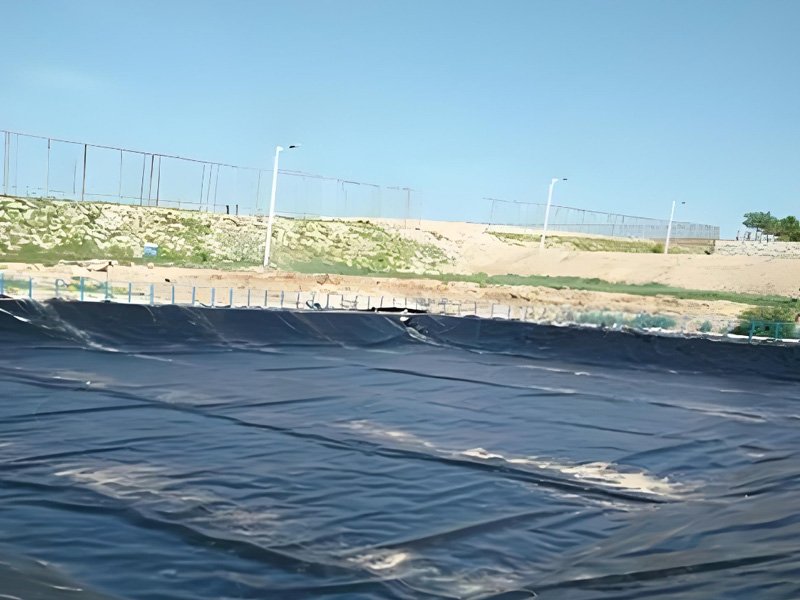
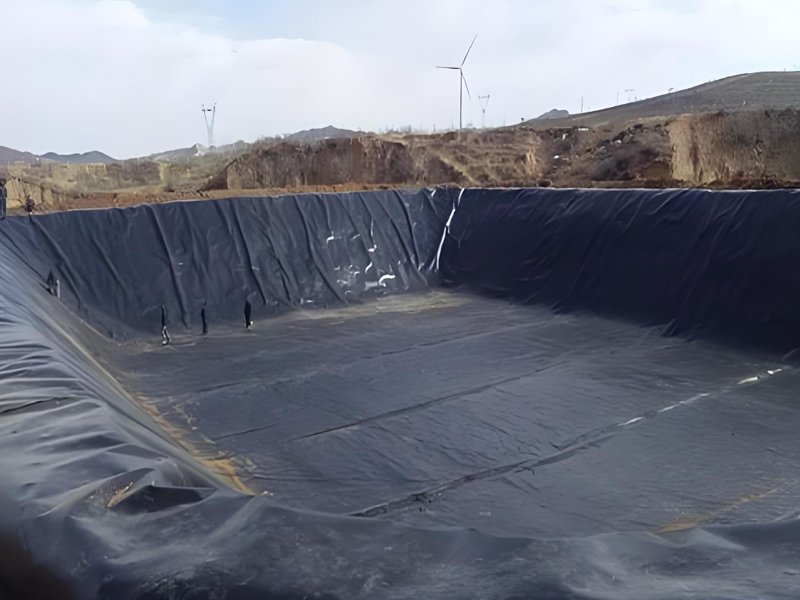
2. Key Factors Influencing Geomembrane Life Expectancy
The durability and long-term performance of a geomembrane are dictated by several critical factors. Understanding these elements is essential for accurate life expectancy predictions and for implementing strategies to extend service life.
2.1 Geomembrane Raw Materials: The Foundation of Durability
The intrinsic properties of the polymeric resin used in geomembrane manufacturing form the bedrock of its long-term performance. Not all polyethylene (PE) is identical; differences in resin formulation, molecular density, and the additive package significantly impact durability.
- Molecular Density:HDPE, with its higher molecular density, generally exhibits greater stiffness, tensile strength, and chemical resistance compared to LLDPE. This often translates to a longer projected lifespan in demanding applications like landfills, where resistance to puncturing and chemical attack is critical. LLDPE, conversely, offers superior flexibility and elongation, making it less prone to stress cracking and easier to install in complex geometries, though it may have slightly lower UV resistance without proper stabilization.
- Anti-aging Properties (Additive Package):The inclusion of specific additives, particularly antioxidants and UV stabilizers, is crucial for enhancing a geomembrane’s resistance to degradation.
- Antioxidants:Polymers like polyethylene degrade by oxidation, a reaction between the polymer and oxygen molecules, accelerated by heat. Antioxidants inhibit this process by scavenging free radicals. The “Oxidation Induction Time” (OIT) and “High-Pressure Oxidation Induction Time” (HP-OIT) tests are critical measures of a geomembrane’s resistance to oxidative degradation. A geomembrane’s service life, particularly in buried applications, is often correlated with the depletion rate of these antioxidants. Studies indicate that thicker geomembranes tend to have longer antioxidant depletion times, thus extending their service life. For instance, research has shown that a 2.0 mm thick HDPE geomembrane could have a service life exceeding 50 years at 50°C and potentially hundreds of years at lower temperatures when immersed in leachate, based on antioxidant depletion analysis.
- UV Stabilizers (Carbon Black):For exposed applications, resistance to ultraviolet (UV) radiation is paramount. Carbon black, typically added at 2-3% by weight, acts as an excellent UV absorber and screen, protecting the polymer chains from photo-oxidation. The dispersion and quality of carbon black directly influence the geomembrane’s UV resistance. While HDPE is generally more resistant to UV degradation than some other materials like PVC, prolonged exposure will still lead to gradual degradation if not adequately protected or formulated.
- Chemical Resistance:Geomembranes in contact with various chemicals in soil or water, such as those found in mining solutions, industrial effluents, or landfill leachate, must possess strong chemical resistance. The polymer type and its specific formulation determine its resistance to chemical erosion, dissolution, and deterioration. For example, specialized geomembranes like XR-5® are engineered for superior resistance to hydrocarbons, acids, and alkalis, significantly extending their lifespan in chemically aggressive environments compared to standard HDPE or PVC.
2.2 Environmental Conditions: The External Stressors
The environment in which a geomembrane operates plays a pivotal role in its long-term performance.
- Exposure Conditions:
- Exposed to Sunlight (UV Radiation and Temperature Changes):Geomembranes that are permanently exposed to sunlight are subject to photo-oxidation caused by UV radiation, which can lead to chain scission, embrittlement, and cracking. Temperature fluctuations also induce expansion and contraction, placing stress on the material and seams. The rate of degradation is accelerated by higher temperatures. Studies have shown that even with UV stabilizers, exposed geomembranes will gradually degrade. Real-world case studies have indicated that exposed geomembranes can remain functional for over 30 years in various climatic zones, but also noted failures within a few years if antioxidants were depleted quickly or due to stress cracking in heat-affected zones of welds.
- Buried Underneath (Protection and Temperature Stability):Buried geomembranes, especially those covered with soil or other protective layers, benefit significantly from the stable temperature environment and protection from UV radiation. This dramatically extends their service life compared to exposed applications. The primary degradation mechanism for buried geomembranes shifts from UV and thermal effects to oxidative degradation driven by antioxidant depletion and, to a lesser extent, chemical exposure and biological degradation. The GRI-GM13 standard, for instance, suggests that geomembranes buried without exposure can last 50 years or more.
- Temperature:Temperature is a critical accelerant for degradation processes. Higher temperatures increase the rate of chemical reactions, including oxidation and hydrolysis. For HDPE geomembranes, temperatures exceeding 80-90°C are generally considered maximum service temperatures before significant acceleration of degradation occurs. Temperature variations can also impact mechanical performance (softening at high temperatures, embrittlement at low), geomembrane shape (expansion/contraction), and critically, seam integrity, potentially leading to deformations or failures.
- Chemical Exposure:The presence of aggressive chemicals in the containment environment can lead to chemical erosion, dissolution, or deterioration of the geomembrane, compromising its barrier function. For instance, in mining applications, geomembranes are immersed in solutions with varying pH and chemical compositions, which can significantly affect their durability. Selecting a geomembrane with verified chemical compatibility for the specific leachate or contained fluid is non-negotiable for long-term performance.
2.3 Installation Quality: A Critical Determinant
Even the highest quality geomembrane material can fail prematurely if not installed correctly. Poor installation practices can introduce defects that become stress points for degradation.
- Site Preparation:A properly prepared subgrade, free of sharp objects, large stones, and excessive moisture, is crucial. Subgrade irregularities can induce localized stress concentrations in the geomembrane, leading to stress cracking or punctures over time.
- Seaming Quality:The integrity of geomembrane seams, typically created by thermal fusion welding (hot wedge or extrusion welding), is paramount. Weak or improperly executed seams are common points of failure. Quality assurance/quality control (QA/QC) during installation, including non-destructive tests (e.g., air pressure testing, vacuum box testing) and destructive tests (e.g., shear and peel strength tests on seam samples), is essential to ensure seam integrity and, consequently, the overall longevity of the liner.
- Wrinkles and Folds:Large wrinkles or folds left during installation can become points of stress concentration, especially with thermal expansion and contraction cycles. These areas are more susceptible to stress cracking or damage over time.
- Anchoring and Penetrations:Proper anchoring of the geomembrane at the edges and careful detailing around penetrations (e.g., pipes) are critical to prevent uplift, tearing, or leakage. Inadequate anchoring can lead to geomembrane movement and stress.
2.4 Maintenance: Prolonging Service Life Through Vigilance
Even after proper material selection and installation, ongoing maintenance and monitoring are vital for maximizing geomembrane life expectancy.
- Regular Inspection:Periodic visual inspections are essential to identify any signs of damage, wear, or deterioration such as punctures, tears, abrasions, stress cracking, or discolored areas. For exposed liners, this includes checking for UV degradation.
- Leak Detection Systems:For critical containment applications, installing leak detection systems (e.g., electrical leak location systems) allows for early identification of hidden leaks, preventing minor issues from escalating into major failures.
- Prompt Repairs:Any detected damage, no matter how small, should be addressed immediately. Timely and proper repairs, using compatible materials and approved techniques by trained personnel, are crucial to restore the geomembrane’s integrity and prevent further degradation.
- Surface Cleaning:For exposed applications, regular cleaning to remove debris, algae, or sediment can prevent biological growth or physical damage. Care must be taken to use cleaning agents that are safe for the geomembrane material.
- Protection:If geomembranes are exposed, providing a protective cover (e.g., soil, gravel, or even geotextile layers) in areas of high traffic or potential physical damage can significantly extend their life.
3. Service Life Prediction Models and Standards
Predicting the exact service life of a geomembrane is a complex scientific endeavor. However, various models and standards have been developed to provide reasonable estimations based on accelerated aging tests and field data.
- Arrhenius Methodology:This widely accepted methodology, based on the Arrhenius equation, is used to predict the long-term performance of polymeric materials. It extrapolates results from accelerated aging tests conducted at elevated temperatures to predict material behavior at lower, in-service temperatures. The Geosynthetic Institute (GSI) has played a significant role in developing and applying this methodology for geomembranes, particularly concerning antioxidant depletion.
- Oxidative Induction Time (OIT) Depletion Models:As mentioned, the depletion of antioxidants is a key indicator of a geomembrane’s remaining service life, especially for buried applications. Predictive models track the rate of antioxidant consumption under various environmental conditions (temperature, chemical exposure) to estimate the time until the geomembrane enters the degradation phase, where its mechanical properties begin to rapidly decline. The “half-life” concept, often defined as a 50% reduction in a critical design property, is a common arbitrary limit for service life.
- GRI-GM13 Standard:The Geosynthetic Institute (GRI) developed the GRI-GM13 specification, which outlines the minimum test values for HDPE geomembranes used in exposed applications. While not a direct life prediction standard, it sets material quality benchmarks that contribute to long-term durability. Other GRI standards, like GRI-GM17 for LLDPE, also provide critical performance criteria.
- Real-world Case Studies:Accumulating field data from exhumed geomembranes provides invaluable insights into actual long-term performance. For instance, studies on HDPE geomembranes exhumed from hazardous waste landfills after 25 years of operation have shown varying degrees of antioxidant depletion and property changes, confirming the importance of initial formulation and in-situ conditions. These case studies help refine predictive models and validate theoretical expectations.
4. Comparative Life Expectancy of Common Geomembrane Materials
While specific lifespan depends on the factors discussed, general expectations for common geomembrane materials can be outlined:
- HDPE (High-Density Polyethylene):Widely regarded for its robust long-term performance. With proper formulation, installation, and coverage, HDPE geomembranes can last for 50 to over 100 years in buried, protected applications. In exposed applications, well-stabilized HDPE can perform for 20-30+ years, though continuous exposure will eventually lead to degradation. Its excellent chemical resistance makes it ideal for landfill liners and harsh chemical containment.
- LLDPE (Linear Low-Density Polyethylene):Offers greater flexibility and elongation than HDPE, making it more resistant to differential settlement and stress cracking. While often perceived as having slightly lower UV resistance than HDPE, modern LLDPE formulations with robust additive packages can still provide significant UV durability. In buried applications, LLDPE can approach the longevity of HDPE, potentially lasting 40-80 years. For exposed applications, a well-formulated LLDPE can last for 15-25+ years.
- PVC (Polyvinyl Chloride):Known for its flexibility and ease of installation, PVC typically has a shorter life expectancy than polyethylene geomembranes, especially in exposed applications, due to its susceptibility to UV degradation and plasticizer migration. Buried PVC can last 20-40 years, while exposed PVC is generally expected to perform for 10-20 years before significant degradation.
- CSPE (Chlorosulfonated Polyethylene):Offers excellent flexibility and resistance to ozone and UV radiation. CSPE geomembranes are often used in exposed applications where flexibility is crucial. Their projected lifespan typically ranges from 30 to 50+ years in exposed conditions.
- RPP (Reinforced Polypropylene) / RPE (Reinforced Polyethylene):These reinforced geomembranes offer enhanced tear and puncture resistance due to a fabric reinforcement layer. Their longevity largely depends on the base polymer (PP or PE) and the quality of the reinforcement and coating. They can offer excellent chemical resistance and durability, with lifespans comparable to their non-reinforced counterparts, often extending for 20-40+ years depending on specific formulation and application.
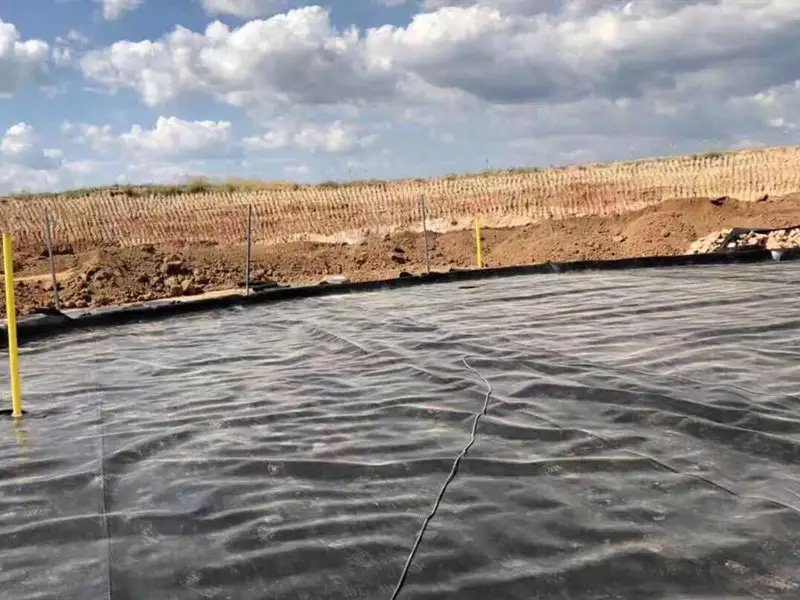
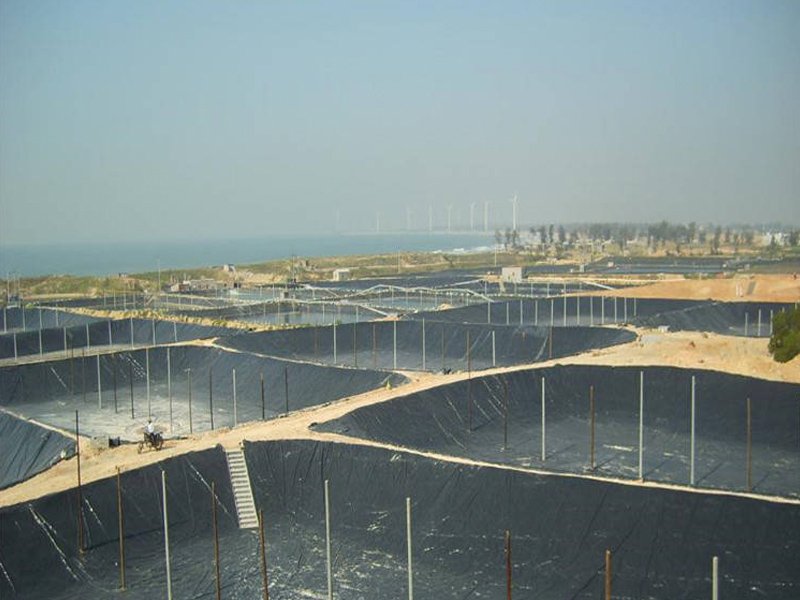
5. Data Speaks: Real-World Performance and Industry Insights
The theoretical predictions and laboratory accelerated aging tests are continuously validated and refined by real-world performance data.
- Landfill Liners:One of the most demanding applications for geomembranes, landfill liners are designed for multi-generational service. Reports from various regions demonstrate HDPE geomembranes performing effectively for several decades. For instance, exhumed HDPE geomembranes from municipal solid waste landfills in North America, after 20-30 years of service, have shown that while antioxidant levels might be depleted in certain zones, the overall mechanical integrity remained sufficient to maintain barrier function. This highlights that “end of service life” doesn’t necessarily mean catastrophic failure but rather a point where engineering properties fall below design thresholds.
- Pond and Reservoir Liners:Geomembranes used in water containment, especially those covered with water or earth, often achieve their intended long service lives. Case studies of irrigation ponds and potable water reservoirs lined with HDPE or LLDPE have shown consistent performance for decades, reinforcing the benefit of protected environments.
- Mining Applications:In the mining sector, geomembranes face aggressive chemical solutions and demanding site conditions. Long-term immersion tests and field observations are critical. Research has shown that temperature and the specific chemical composition of mining solutions significantly influence the durability of HDPE geomembranes, underscoring the need for rigorous chemical compatibility testing prior to selection.
6. Conclusion
The life expectancy of a geomembrane is a multifaceted concept, influenced by factors spanning material science, environmental engineering, and construction practices. While manufacturers offer warranties and standards provide guidelines, the true longevity of a geomembrane hinges on a holistic approach:
- Informed Material Selection:Choosing the correct geomembrane type and formulation tailored to the specific chemical, thermal, and mechanical demands of the application is paramount. This involves considering the presence of UV radiation, aggressive chemicals, and anticipated temperatures.
- Meticulous Installation:Proper site preparation, adherence to stringent seaming protocols, and careful handling during deployment are critical to avoid installation-induced defects that can compromise long-term performance. Quality assurance and quality control (QA/QC) during installation are non-negotiable investments.
- Strategic Environmental Management:Wherever possible, burying or covering geomembranes significantly extends their service life by protecting them from UV radiation and extreme temperature fluctuations.
- Proactive Maintenance and Monitoring:Regular inspections, prompt repairs of any detected damage, and the implementation of leak detection systems are essential for early problem identification and resolution, preventing minor issues from escalating into costly failures.
By understanding these interwoven factors and implementing best practices at every stage of a project, engineers and developers can confidently specify, install, and manage geomembranes, ensuring their long-term integrity and realizing their full potential as durable, effective containment barriers for generations. For specialized geomembrane solutions tailored to your project’s unique demands, consult with leading experts in geosynthetics to ensure optimal performance and longevity.
Any questions or inquiries, please contact BPM Geomembrane.


